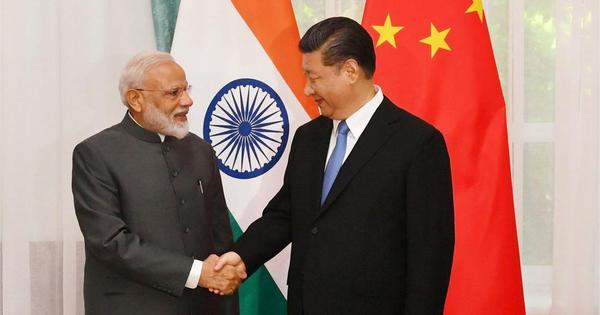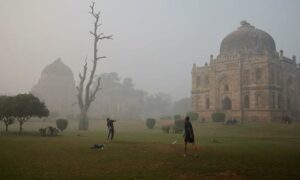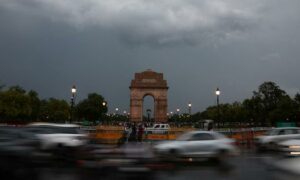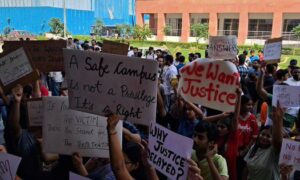
Prime Minister Narendra Modi will be in China’s Tianjin on Sunday for the Shanghai Cooperation Organisation summit and a likely bilateral meeting with Chinese President Xi Jinping.
This is his first visit to China in seven years and the first since the deadly military face-off between the two countries along the Line of Actual Control in eastern Ladakh in 2020.
The Shanghai Cooperation Organisation has 10 members: India, China, Pakistan, Russia, Iran and five other nations from the Eurasian region.
Modi’s visit comes on the back of the Indian and Chinese foreign ministers agreeing earlier in August to facilitate trade and investment flows. India has also resumed issuing tourist visas to Chinese citizens after a gap of five years and there has been some movement on the “boundary question”.
The trip by the Indian prime minister and the recent high-level interactions between the two nations is significant because it comes amid diplomatic turbulence between India and the United States.
The US has in recent decades viewed India as a counterweight to China’s growing influence in the Indo-Pacific. New Delhi has also been enthusiastic about its improving defence partnership with Washington.
So despite the frosty relations India and the US shared during the Cold War, the impulse to develop their strategic partnership has found bipartisan support in both countries over the past 25 years.
However, Trump’s transactional approach to international relations and trade ties has caused considerable discomfort in New Delhi in his second term, which began in January.
Trump levied a 25% so-called reciprocal tariff on India, citing high levies New Delhi imposes on foreign goods. After that, the US president doubled the tariffs on India because it has been buying Russian oil amid Moscow’s war on Ukraine. Trump has repeatedly alleged that India’s imports are funding the Russian military campaign.
A close aide of Trump on Wednesday even described the conflict as “Modi’s war”.
The trade deal the two countries are negotiating has not been finalised.
What has also irked New Delhi are Trump’s repeated claims that he mediated a ceasefire between India and Pakistan following their four-day conflict in May. India has maintained that it was the Pakistani military that sought a halt to the skirmishes.
Trump’s claim contrasts New Delhi’s long-standing position that disputes between India and Pakistan must be resolved bilaterally, without the interference of third parties such as the US.
Political scientist Paul Staniland described Washington’s recent actions vis-à-vis New Delhi “a train wreck that will leave a grim legacy for US foreign policy toward India”.
These recent events remind India of its doubts about the reliability of a partnership with the US.
Some in the West are wondering whether Trump has pushed India towards China, undoing decades of relationship-building by Washington.
On the tariff issue, China was quick to side with India.
As Harsh V Pant, vice president of foreign policy at Observer Research Foundation, pointed out in Time magazine, the turbulence created by Trump is an opportunity that Beijing has been waiting for. It opens up new possibilities for China to not only work with India to rebuild ties, but also to “blunt the sharper edge of a once-burgeoning India-US partnership”.
An old trajectory
While it is true that the attempts to normalise ties with Beijing are partly driven by New Delhi’s need to advance its economic interests amid headwinds from Washington, the warming of bilateral relations was not a consequence of Trump’s actions. In fact, this predates Trump’s second term.
As foreign policy analyst Michael Kugelman explained, “Trump’s policies are an accelerant of, not the catalyst for, India-China détente”.
The thaw in India-China relations came in October 2024 when Modi and Xi met in Kazan on the sidelines of the BRICS summit. This was their first formal meeting since the 2020 skirmishes.
The meeting itself came two days after the two countries announced that they had reached a patrolling arrangement along the Line of Actual Control, “leading to the disengagement” of the two militaries in eastern Ladakh.
This was a clear sign of a thaw in relations, with the Chinese foreign ministry saying that the Kazan meeting “marked a turning point for the improvement” of bilateral ties.
Over the past 10 months, talks have been held at several levels, including between national security advisers, foreign secretaries and the external affairs ministers.
A number of other initiatives have been in the works since January, including the resumption of direct flights between the two countries and the Kailash Mansarovar Yatra.
Yet, New Delhi is cognisant of the limitations to its improved ties with China. Unresolved problems such as the boundary dispute, Beijing’s growing influence in India’s neighbourhood and its “all-weather” friendship with Pakistan could mean that the two sides only achieve a cold peace.
According to Pant of the Observer Research Foundation, India will be cautious about China’s intentions because the relationship is “competitive” and New Delhi will be keen to build deterrence so that a border skirmish is not repeated.
To avoid being seen as having made a quick turn towards China, India has sought to balance the narrative to some extent. Modi visited Japan before Tianjin and the Indian Navy earlier this month conducted a “joint sail” with its Filipino counterpart in the disputed South China Sea, analysts point out.
Here is a summary of last week’s top stories.
Whose money is it anyway? Congress leader Rahul Gandhi urged the Election Commission to respond to a media report claiming that 10 “anonymous parties” in Gujarat received funds of Rs 4,300 crore in five years, even though they rarely contested polls. The little-known parties allegedly received these funds from 2019-’20 to 2023-’24, a period that included the 2019 and 2024 Lok Sabha elections as well as the 2022 Assembly polls.
The parties fielded only 43 candidates in the polls, collectively securing a mere 54,069 votes. While they officially reported expenses of only Rs 39 lakh, their audit reports showed expenses of Rs 3,500 crore.
Gandhi asked the poll body how these parties received thousands of crores of rupees and where the money went.
Rain havoc. At least 30 persons died after heavy rainfall triggered a landslide near the Vaishno Devi shrine in Jammu and Kashmir’s Katra. The pilgrimage to the shrine was suspended after the landslide, which occurred at about 3 pm on Tuesday.
The Shri Mata Vaishno Devi Shrine Board has urged devotees to reschedule their pilgrimages in view of the incessant rainfall.
Besides Jammu and Kashmir, Himachal Pradesh, Uttarakhand, Punjab, Odisha and Chhattisgarh also received heavy rainfall on Tuesday and experienced flooding in several areas.
In Odisha, more than 170 villages in Balasore, Bhadrak and Jajpur districts were submerged for the second consecutive day on Tuesday. In Chhattisgarh’s Bastar division, eight persons died amid floods.
Southern India also saw heavy rainfall, with Kerala reporting waterlogging and a rise in water levels in several dams. Landslides were also seen in certain parts of the state.
Ayush Rawat explains why Dharali is a warning about unplanned development in the Himalayas.
No access to the prime minister’s degree. The Delhi High Court set aside a Central Information Commission order that had directed Delhi University to disclose information about Prime Minister Narendra Modi’s Bachelor of Arts degree. The university had asked for the information panel’s order to be quashed, claiming that a Right to Information application seeking that the document be made public was politically motivated.
An activist, Neeraj Kumar, had sought details about students from Delhi University’s BA programme in 1978, including their roll numbers, marks and if they passed or failed the course. The university had denied the request, after which he had approached the Central Information Commission.
In a separate case on Monday, the High Court also set aside a 2017 Central Information Commission order directing the Central Board of School Education to disclose details about former Union minister Smriti Irani’s Class 10 and Class 12 records to a Right to Information applicant.
Also on Scroll last week
Follow the Scroll channel on WhatsApp for a curated selection of the news that matters throughout the day, and a round-up of major developments in India and around the world every evening. What you won’t get: spam.
And, if you haven’t already, sign up for our Daily Brief newsletter.
This article first appeared on Scroll.in
📰 Crime Today News is proudly sponsored by DRYFRUIT & CO – A Brand by eFabby Global LLC
Design & Developed by Yes Mom Hosting






